Diving - The adventure continues!
Advanced Open Water Course - Madeira, 21st – 23rd August 2011
After completing my Open Water course, I’d done a couple of other courses in the UK and had a few ‘free dives’ at Wrasbury Dive Centre, but I was keen to do the PADI Advanced Open Water (AOW) course either on or before my next holiday.
Time came and went as it always does, but with a summer holiday in Madeira planned I decided that I’d combine it with completing my AOW.
The AOW course is fairly free form compared with Open Water as the intention is really to extend your diving experience. You are not an Advanced Diver after the course, you have just Advanced beyond Open Water and that’s how PADI position it despite the confusion it seems to cause in some.
There are two compulsory dives, a Navigation Dive and a ‘Deep’ dive to between 18 and 30M. After that you select 3 dives from a selection to complete the 5 that make up the AOW course and allow you to dive down to 30M with any dive centre that recognises the PADI certification (pretty much all of them).
I sounded out a couple of dive centres in Madeira, but went with the biggest (and closest, being in Funchal) Madeira Divepoint. To be fair, they’re hardly comparable size-wise to the Red Sea College I’d done my Open Water with, but through emails and recommendations it seemed they were a good outfit to dive with.
On my first day, I turned up and had a chat with Konstanze who seems to run the office and arranged to start my dives the following days.
I had wanted to do Peak Performance Buoyancy, Wreck and a Night Dive as my 3 electives, but it looked like a Night Dive might be hard to organise. It was agreed I’d start the next day with my PPB dive.
Day 1 – Peak Performance Buoyancy and Deep Dives
I turned up bright and early, passing through the opulent (if a little soul-less) Carlton Pestana hotel and descended the two lifts to the Atlantic Pool area, where Divepoint Madeira’s office is.
On arrival, I was introduced to Jennie Milsom who was going to take me out for my PPB dive.
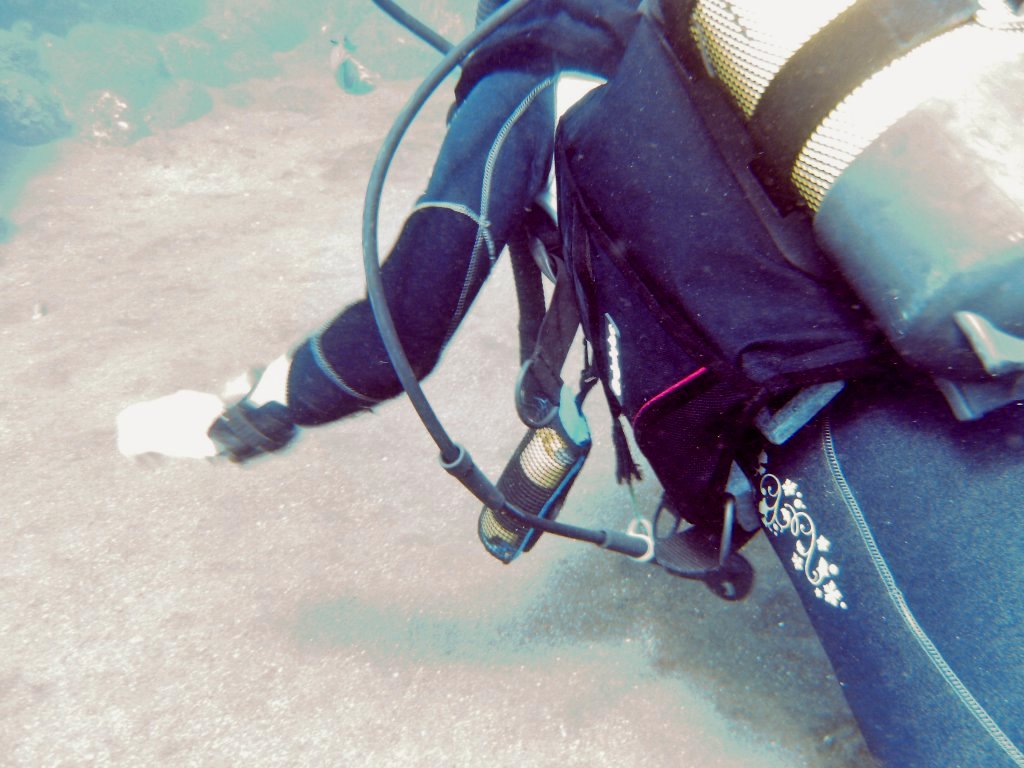
Jennie shows off her buoyancy whilst looking at a fish
We soon kitted up and the two of us set off for the sea which is reached via a pier and a ladder down to a small platform from which you giant stride into the sea.
The PPB dive was to take place on the Carlton housereef and seemed to be going ok, although I was struggling a little in mastering my buoyancy over that last couple of feet from the sea floor with just lung power alone. It also became clear that I was using air pretty quickly and we weren’t able to complete all the exercises Jennie intended to although we’d covered the basics.
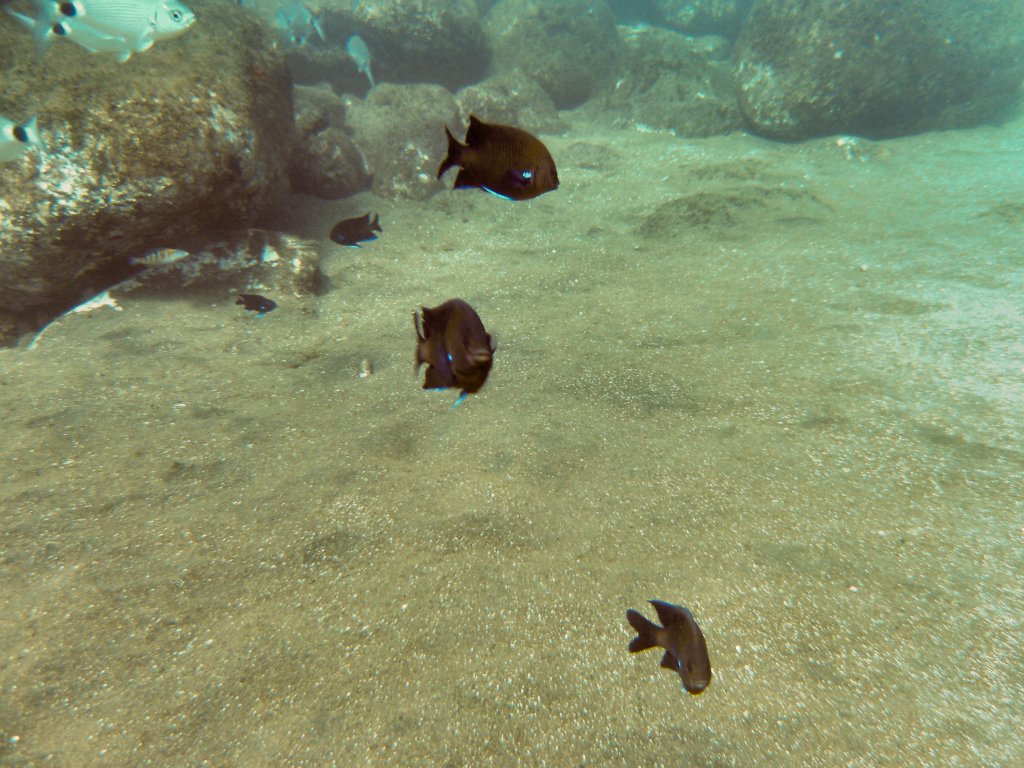
Bluefin Damselfish
The reef was pretty good with a mostly rocky bed and plenty of Atlantic sealife to see (Jennie had commented that a Seal was in the area the previous few days, but sadly we didn’t see it). We only got down to a maximum of 11m, but I was down to 50 bar within 30 minutes and so the dive had to end there.
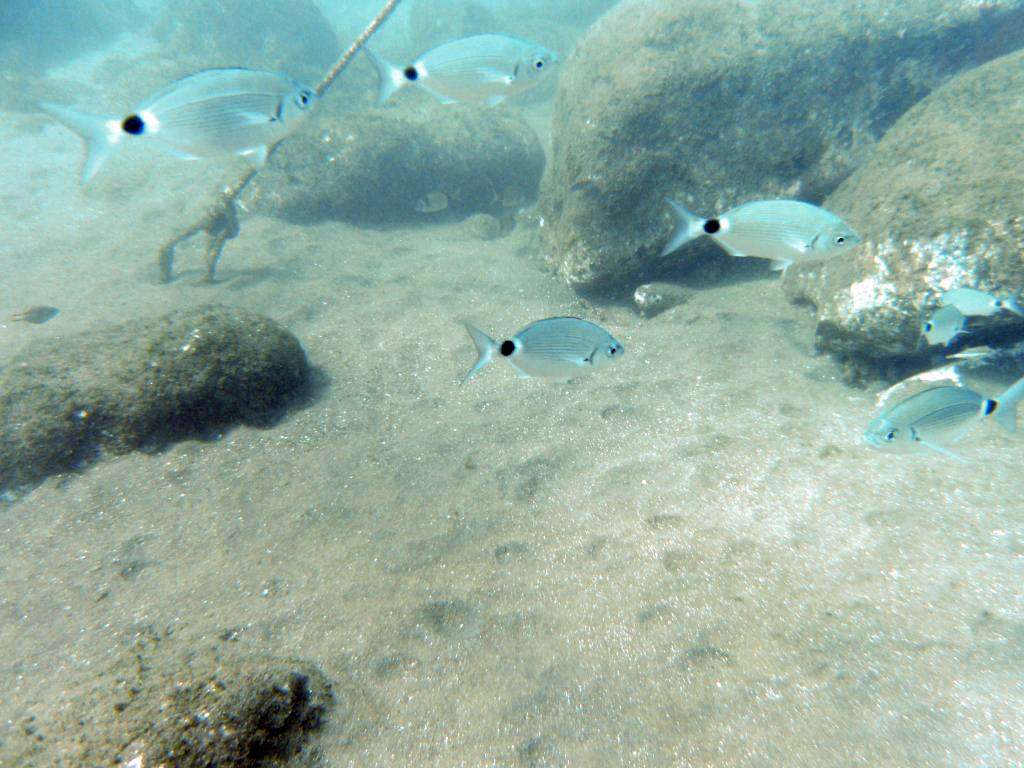
Bream are very common here
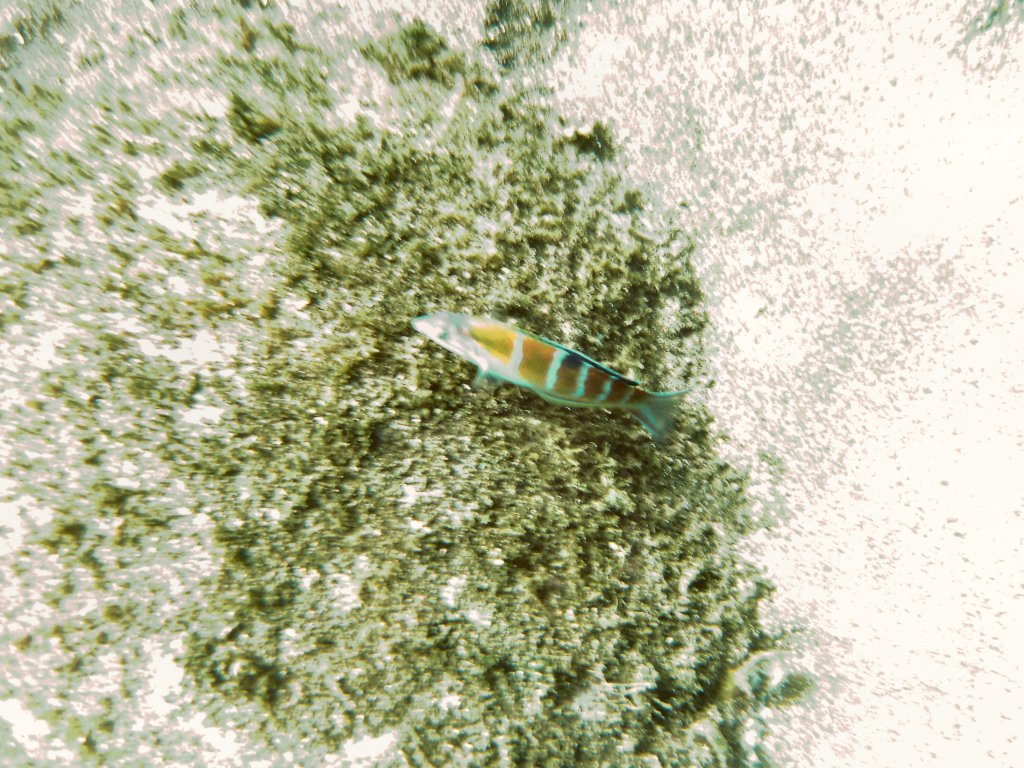
Turkish Wrasse are some of the more colourful fish in Madeiran waters
After some discussion it was suggested I do my deep dive after lunch, but take a 15L tank.
This required a boat trip (and a little less weight on my belt) and we dropped down a chain to 29.6M, almost the magic 30. Everything was going fine, with a group of other divers and Jennie acting as my buddy on the dive. This turned out to be just as well.
As we started to work our way gradually up (at around 25M), I felt something slide across my back. I thought maybe my tank was a bit loose and as I shifted to try and move it I caught sight of something dropping away from me and down to the rocks below. I realised it was my weight belt and I could feel myself beginning to gather upward momentum, a bit like a steam train chugging away from the station...
I got myself vertical and tried to empty my BCD, but it was pretty much empty already and at that point I felt something pulling on my fins. I looked down and saw Jennie had spotted my problem and grabbed my fins. She pulled me down, but there was a bit of a current running and we were swept away from the point the weight belt had fallen as she did so.
She got me to hold onto a rock and went off in search of my belt. I did wonder whilst I clung to the rock being nibbled by a fearless Trigger Fish, who obviously thought I was dish of the day, how long I should give it, but she was quickly back and, remarkably, had recovered my weight belt.
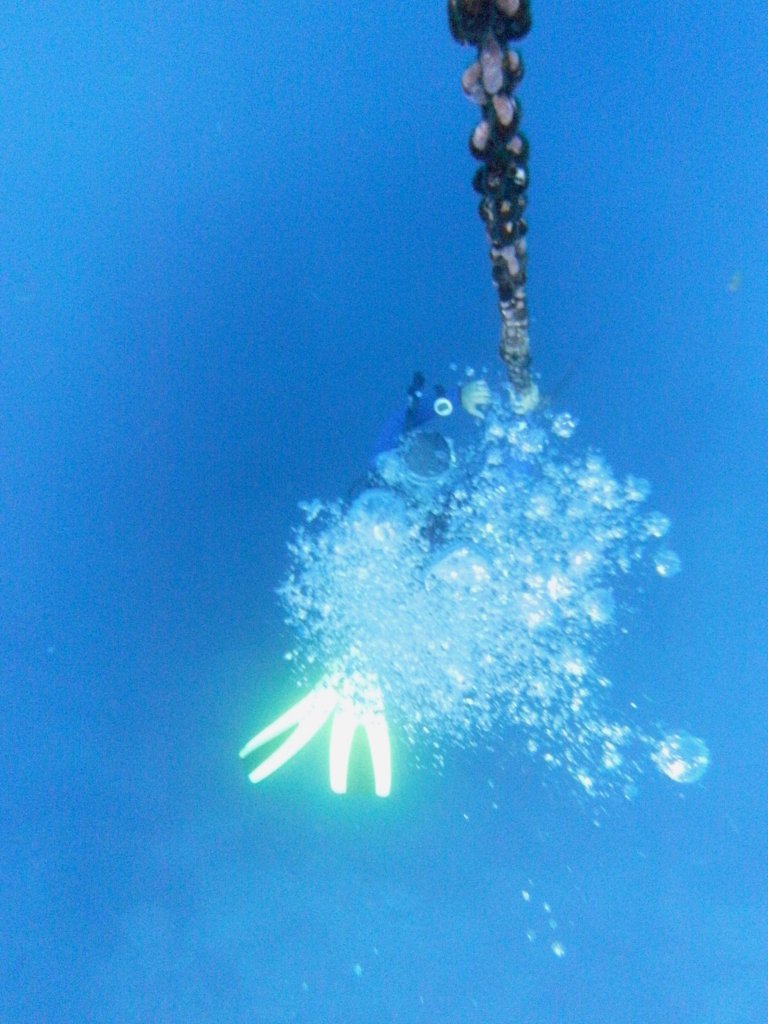
Diver checks his computer on a safety stop
We got it back on me and headed for the surface, completing a 5m safety stop on the way. It all worked out OK, but I was glad she’d caught me as I didn’t really fancy doing a CESA on my first deep dive!
As this had happened and Wilfried, who’d been my actual instructor for the dive, had had to abandon the dive when his 2nd stage started leaking, I didn’t complete the exercise intended to demonstrate the effects of Nitrous Narcosis at depth, but I was told I could complete that the next day on the Wreck Dive, which would be to a similar depth.
Day 2 Wreck and Navigation Dive
Day 2 started with another journey to the boat with a couple of groups of divers having a leisure dive.
Once aboard we headed out to the Pronto, which is just a short boat ride from the Dive Centre.
The Pronto was a water carrying ship which sank as long ago as 1929 whilst carrying water to the Canary Islands, such is Madeira’s relative glut of fresh water.
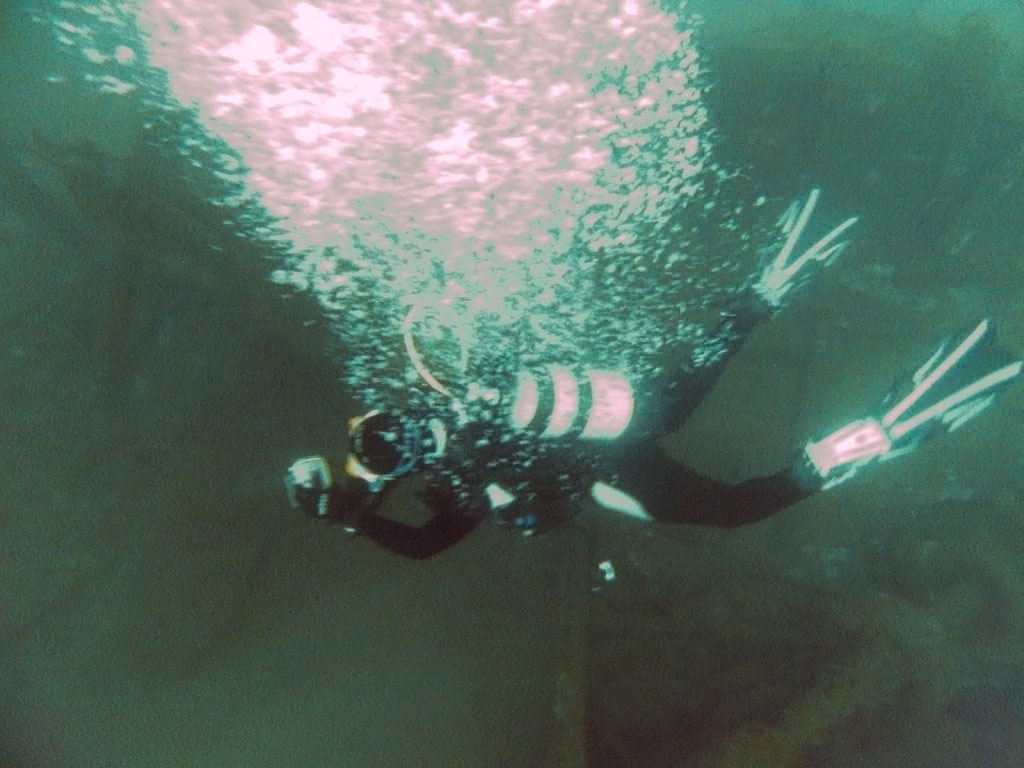
Diver passes over the "Pronto"
Being over 80 years old, the wreck is still reasonably intact and we descended onto her down the mooring chain. She lies in about 30M of water, so it was my second deep dive.
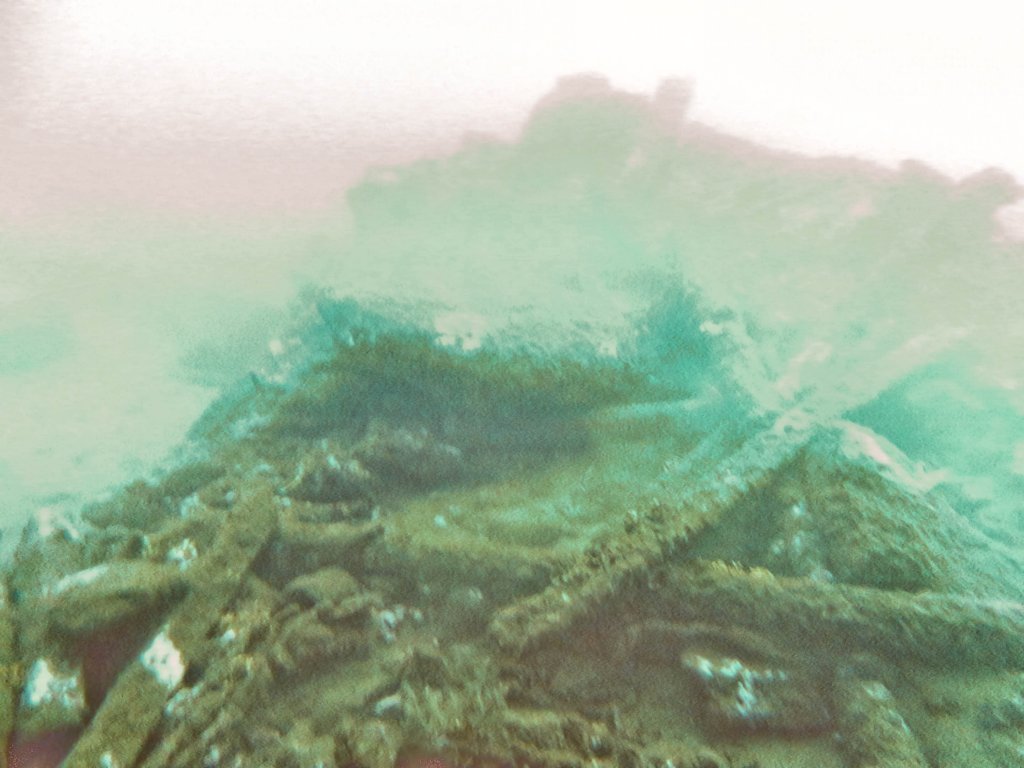
Looking towards the bow of the "Pronto"
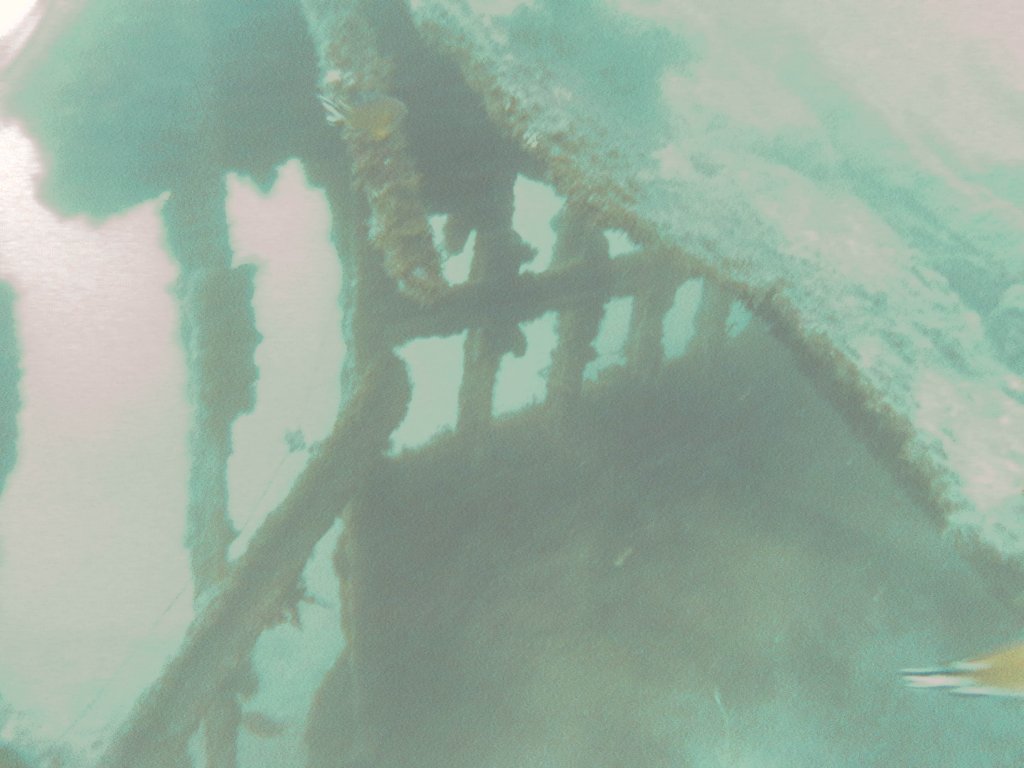
Wreck surprsingly intact for 80+ years
We swam around the wreck, taking in the boiler and the ribs of the ship. The bow is down and fairly broken up, but the stern (with rudder and propeller) and much of the rest of the hull and some superstructure is still intact.
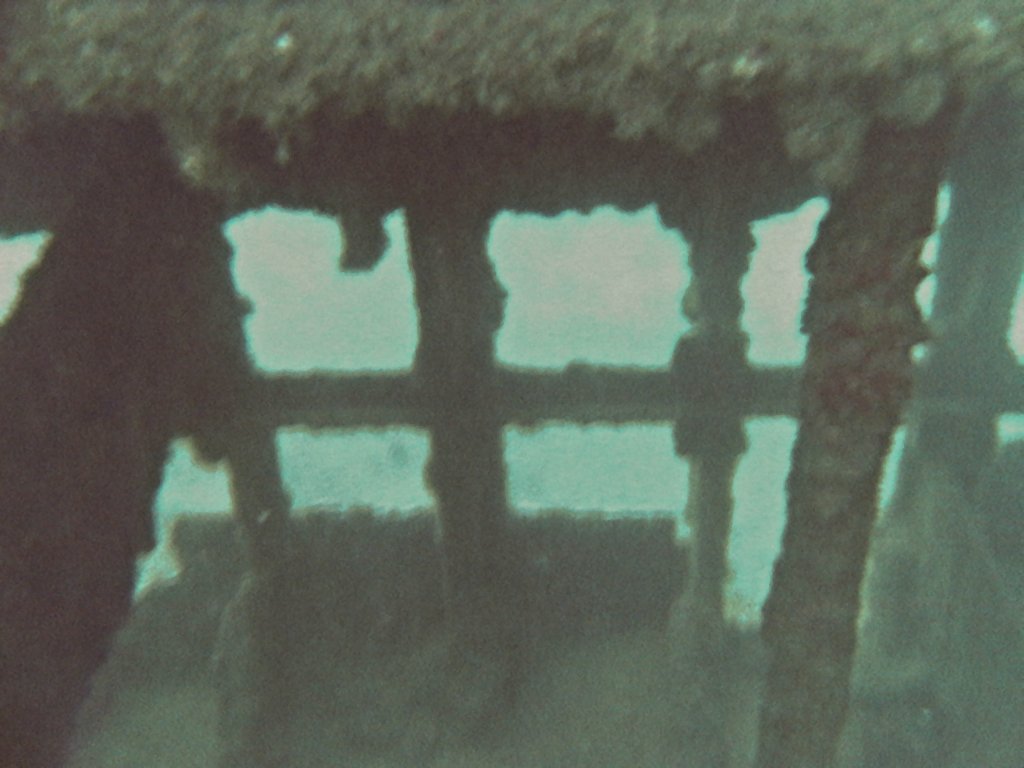
Ribs of the wreck
As I’d missed the exercise on the Deep Dive the previous day I had a slate with some calculations to complete and some questions to answer. The calculations stumped me completely and I got both wrong. The observation questions however were easier and I got those right. It was certainly apparent to me though that the fairly simple mental maths I needed was a bit of a challenge at 30m.
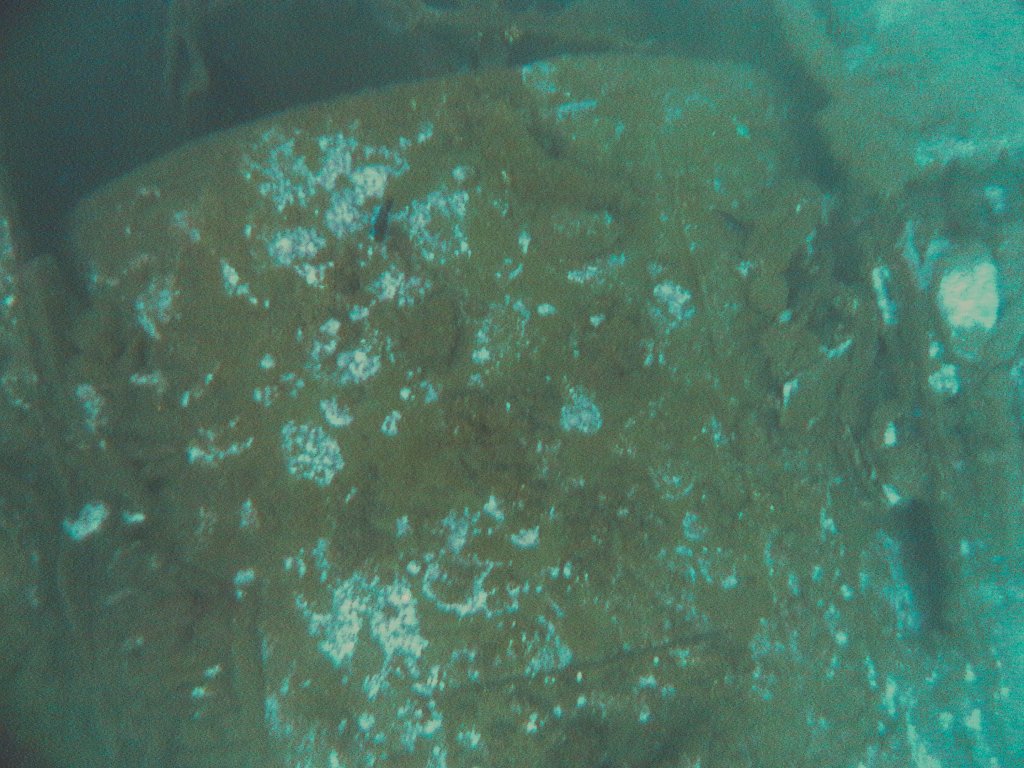
Ship's boiler clearly visible from above
As part of the Wreck Dive I had to sketch the ship, mark North on it (I’d been given a compass for this) and record the maximum and minimum depths of the wreck. This was pretty straight forward and it allowed me a bit of time to look at the sea life on the boat, including a rather shy Grouper that hid in the wreck when we approached.
It wasn’t a long dive, but I didn’t run out of air much earlier than the other divers (although Divepoint had taken the precaution of giving me a 15L tank again).
The dive was interesting, if a little frustratingly short, due to the depth and the risk of exceeding the No Decompression Limit.
After reviewing my awful calculations and better answers and wreck work, I was told to return after lunch for my Navigation dive.
On the Open Water course you are taught how to follow a bearing with a compass. On the AOW course, I had to swim a bearing and reciprocal bearing (straight line and back) for a set distance and then swim a set distance in a square (turning 90 degrees at each corner).
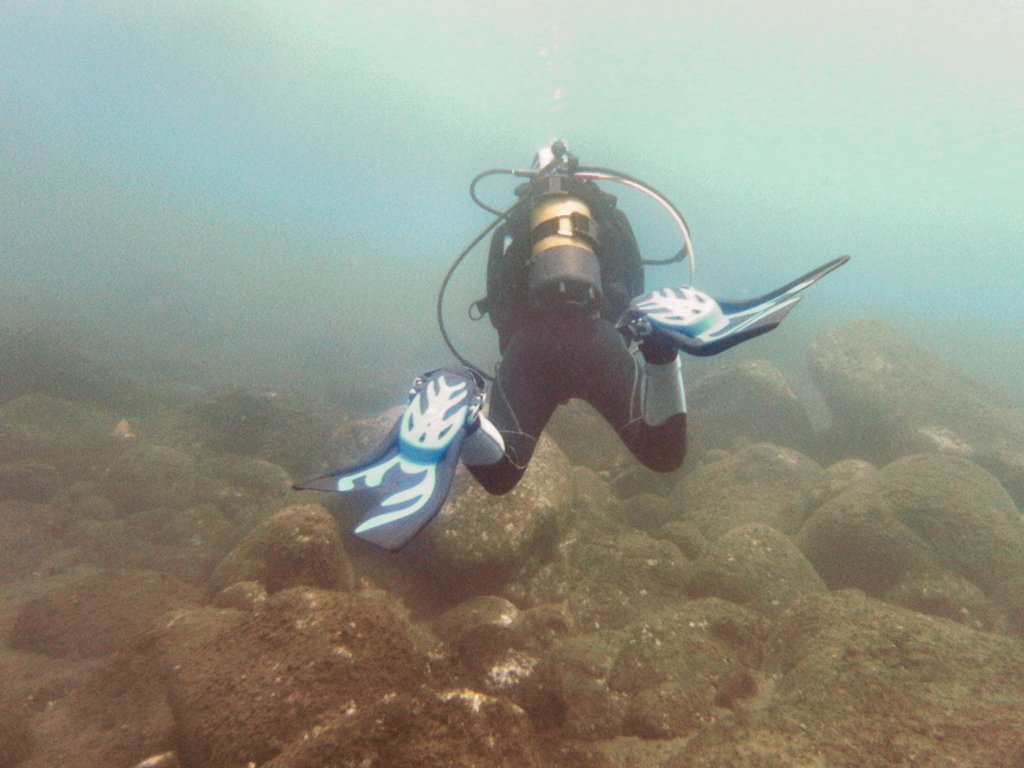
Navigation Dive around housereef
We did this is in the shallows of the Carlton house reef without any real problems (another diver was also completing parts of his AOW course and joined me for this dive). Once completed we swam around the reef and then Jennie feigned being lost and ask the two of use to use ‘landmarks’ to navigate our way back, having warned us to look for things to navigate by, such as notable rocks, mooring lines, a large anchor that lies on the reef.
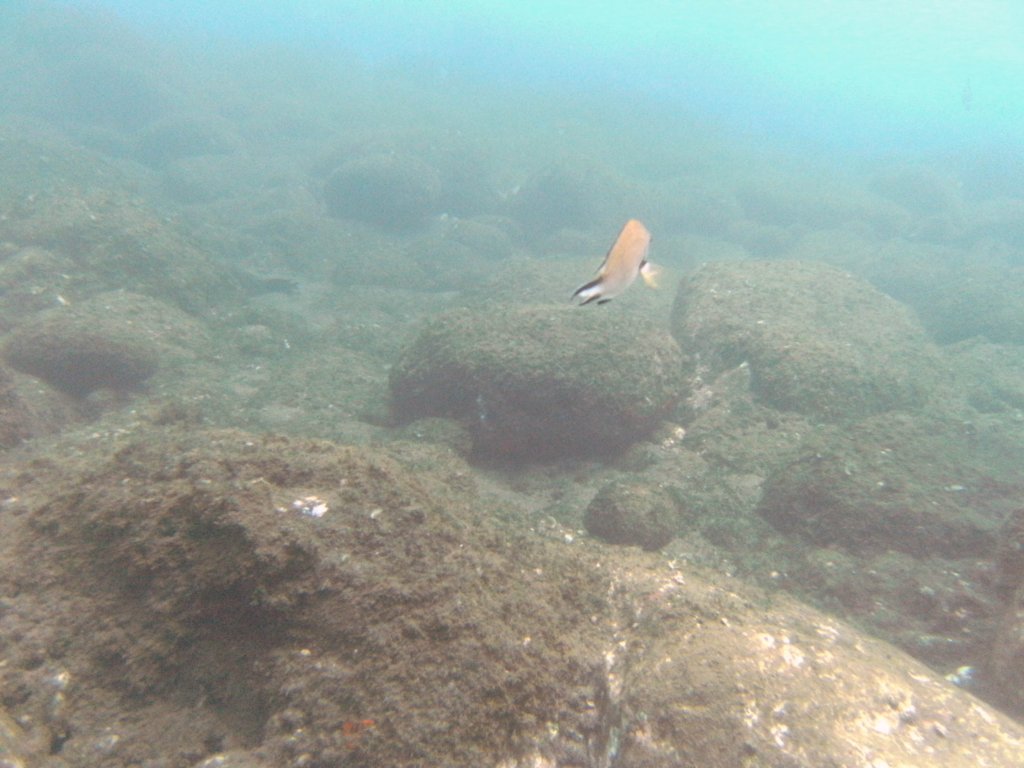
Atlantic Damselfish
Jennie made sure we didn’t get lost, but we pointed out the landmarks we’d spotted as we returned and we got back to the ladder on the pier ok.
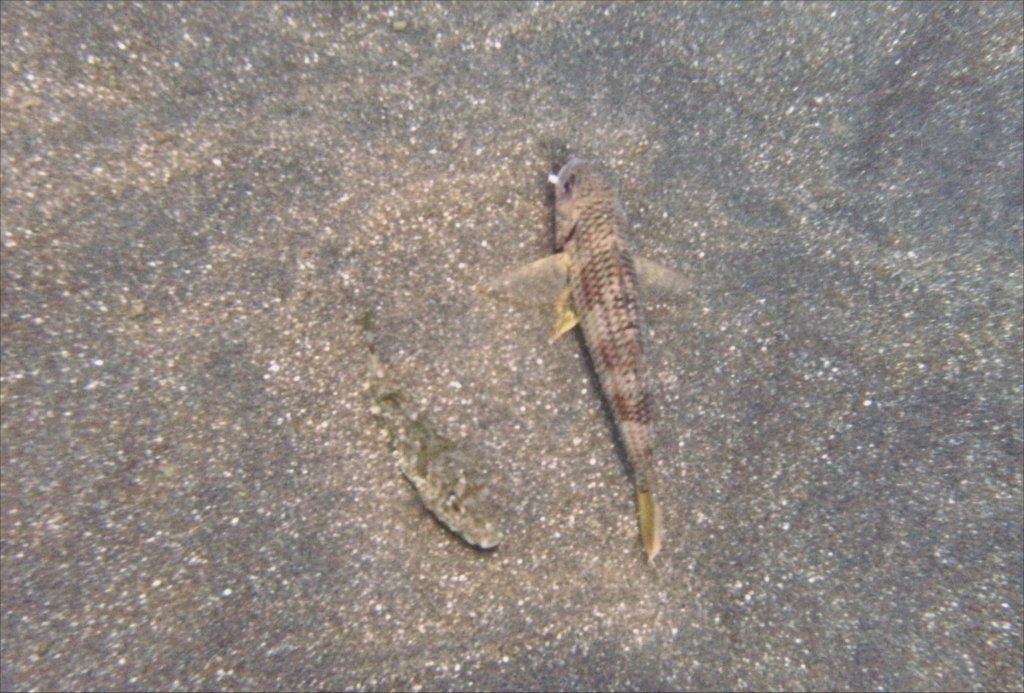
Is this a Lizardfish?
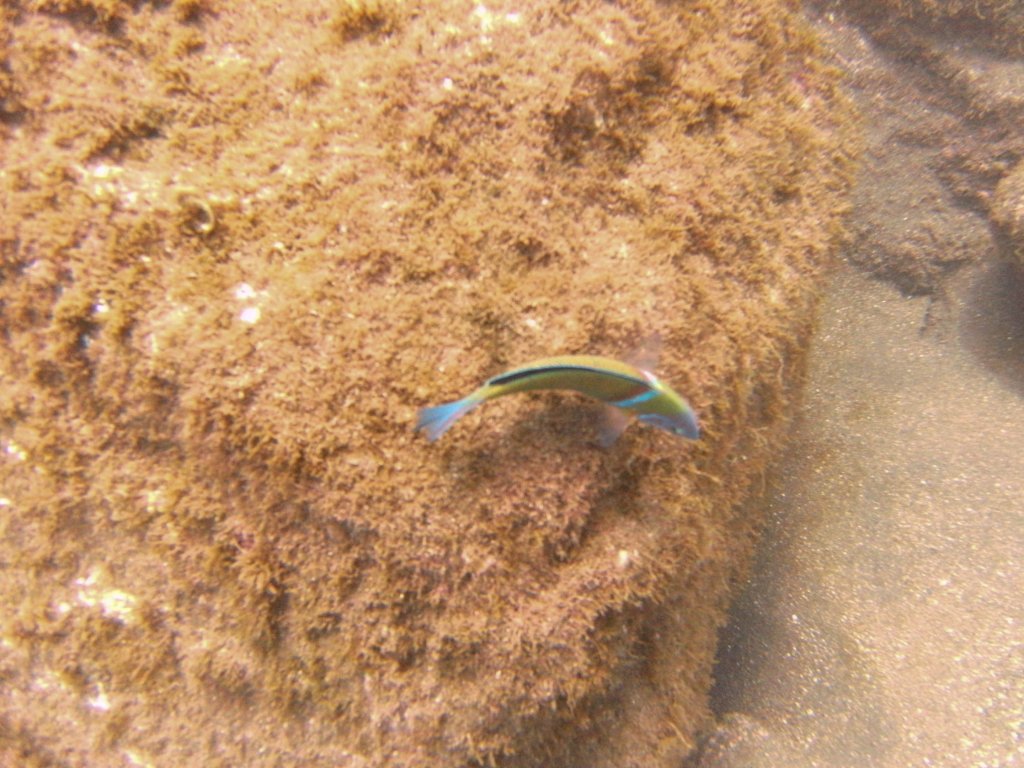
Turkish Wrasse
Day 3 Photography Dive
I had wanted to do a Night Dive, but it became apparent that there wasn’t much demand. On the second day it looked like a couple of Irish divers might like to do one as part of their AOW too, but Divepoint Madeira couldn’t reach them to confirm it and they sold me on the virtues of a trip to the Garajau Nature Reserve to carry out a Photography Dive as I’m a keen on land photographer and have an underwater camera that I’m still struggling with.
Garajau is famed for its fish, especially one very famous Giant Grouper, so I hoped I would get to see that at least.
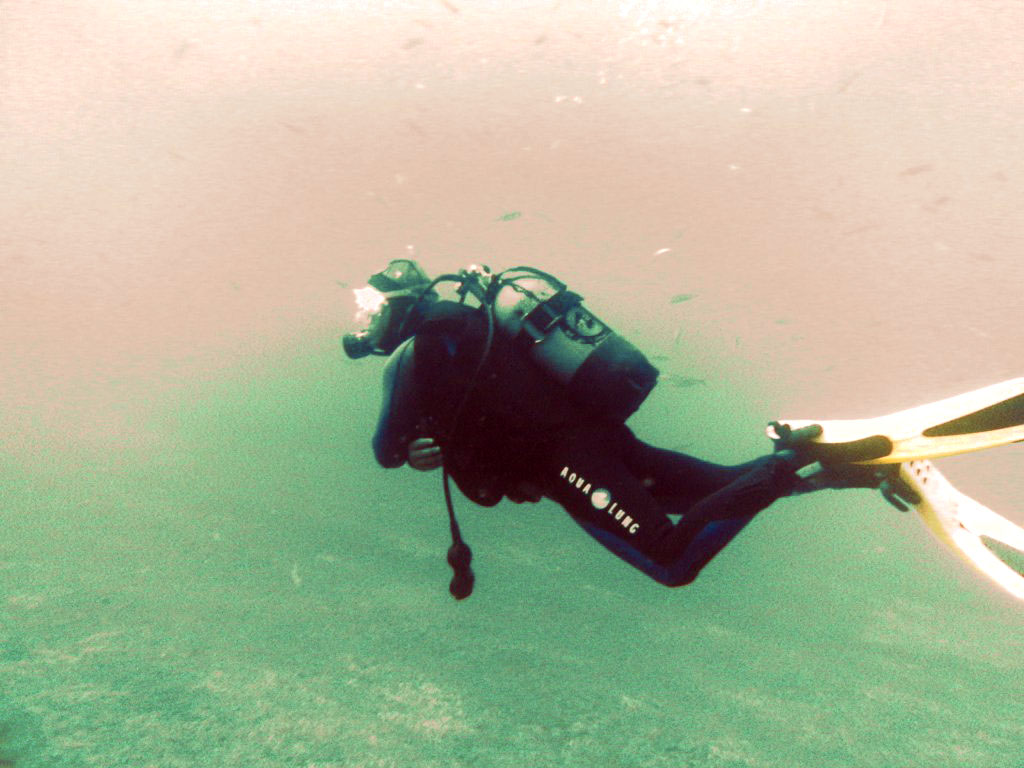
Diver in Garajau
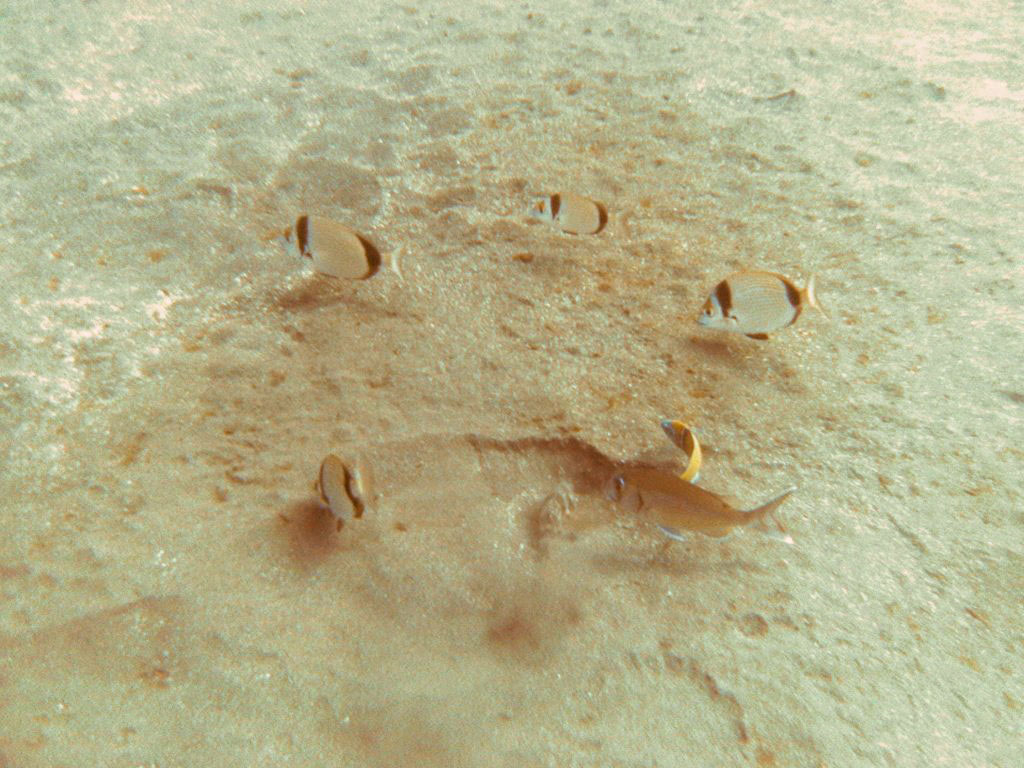
Bream and Wrasse, Garajau
It was a boat ride on the third morning again, this time about 15 minutes until we moored at the bay under the mini-Rio-Jesus on the headland.
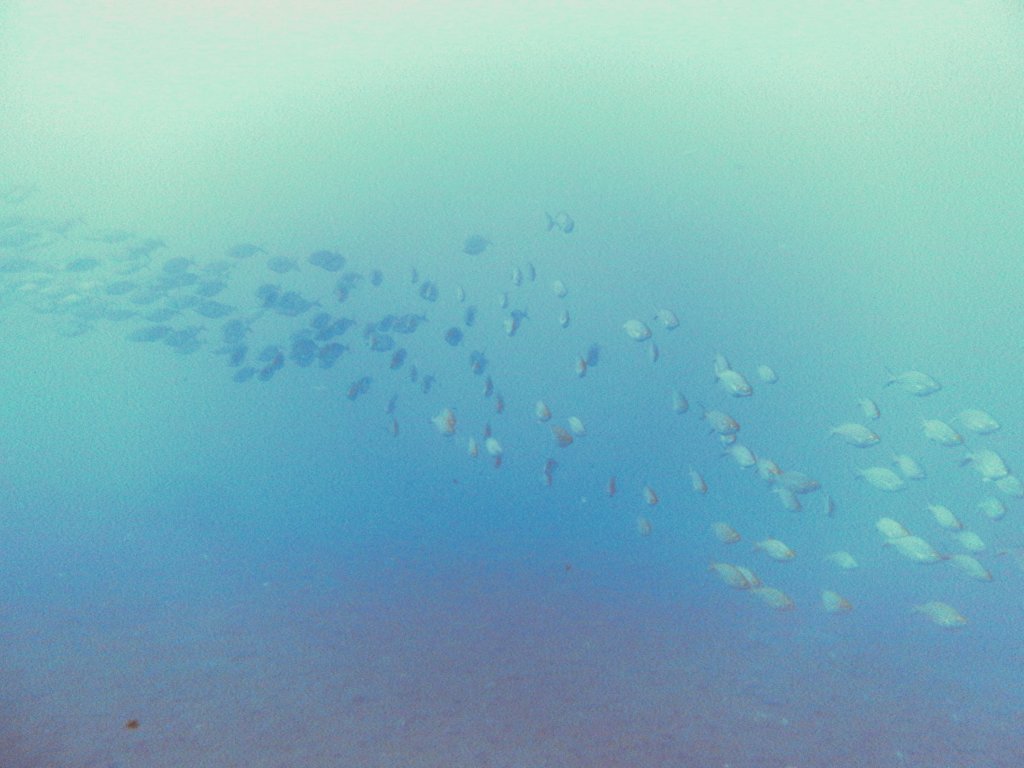
Fish Aplenty!
Again the dive was fairly deep (my computer recorded a maximum of 26.9M) and we descended down the mooring line for a buoy specifically moored for dive boats to tie up to. P>
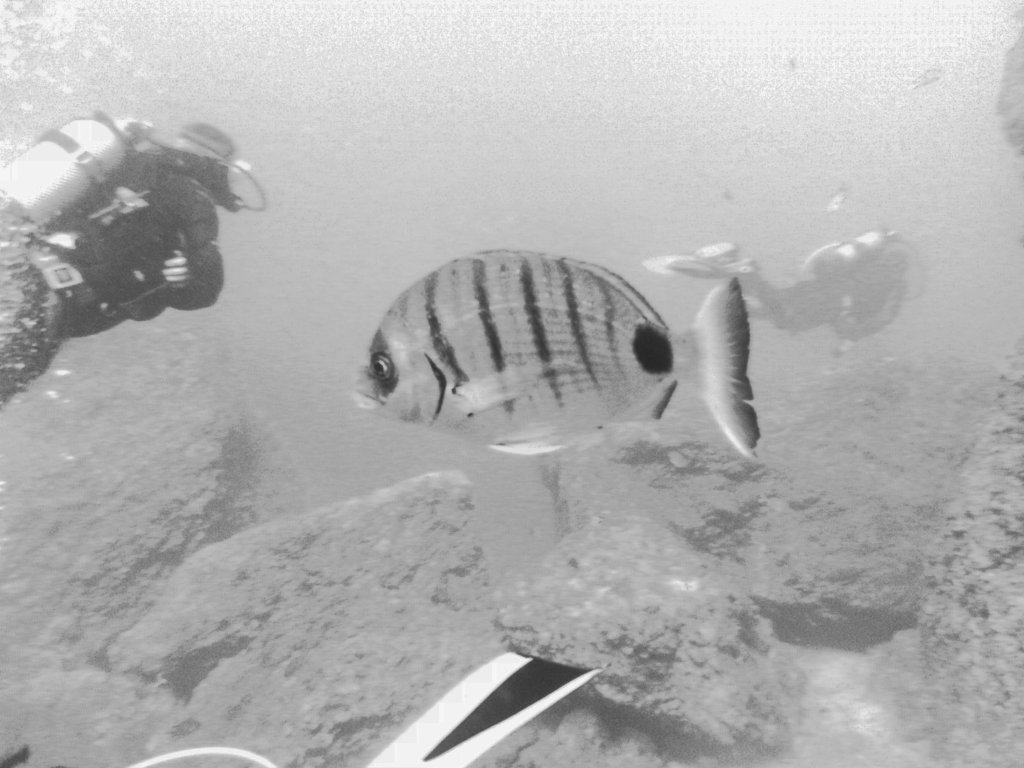
African White Bream and Divers
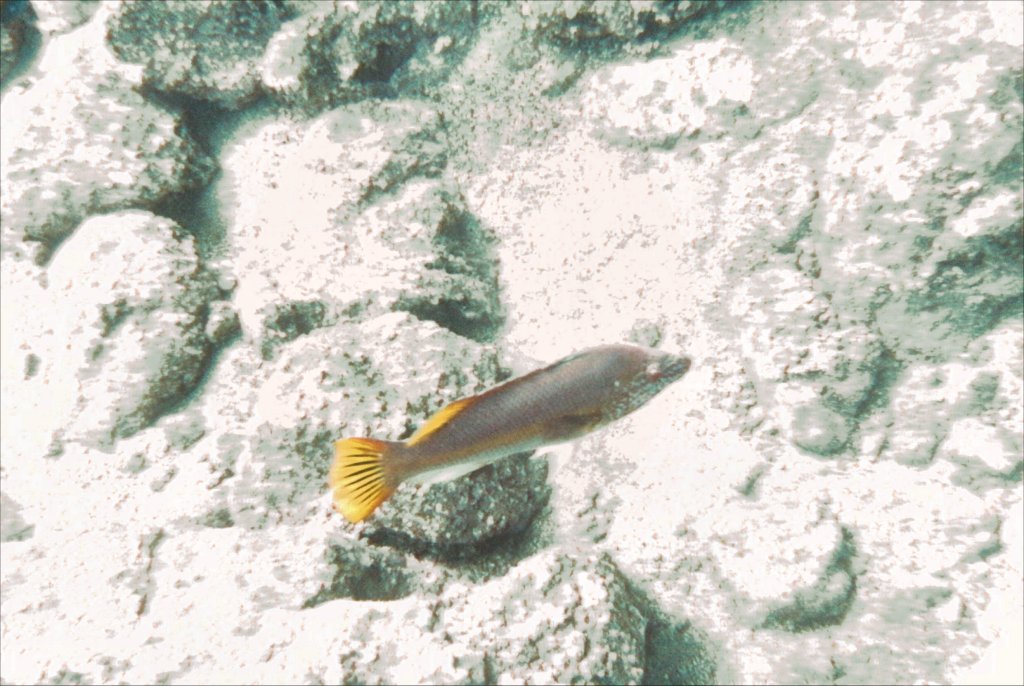
Fish of some sort - Not 100% sure what
The sea here was even more alive with fish than I’d seen before and I was snapping away. Sadly, this meant I was guzzling air again and even more sadly I’d somehow set my camera to overexpose all shots by 2 steps, so they’re really not very good.
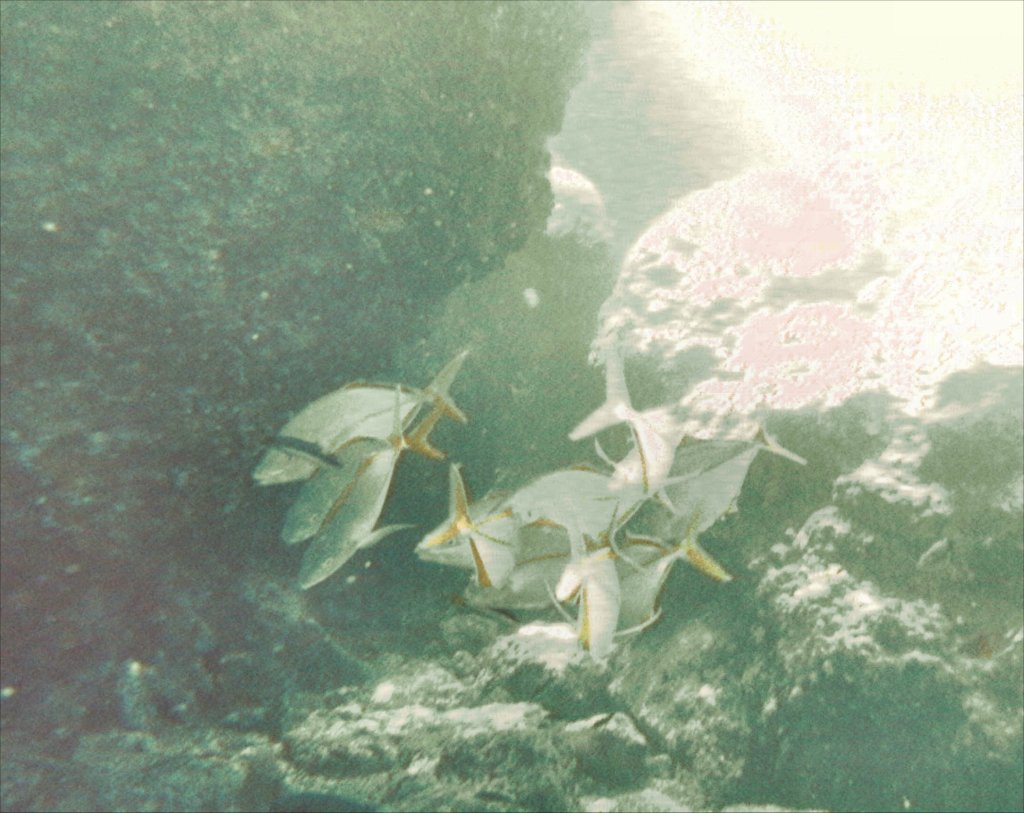
I think these are Cow Bream
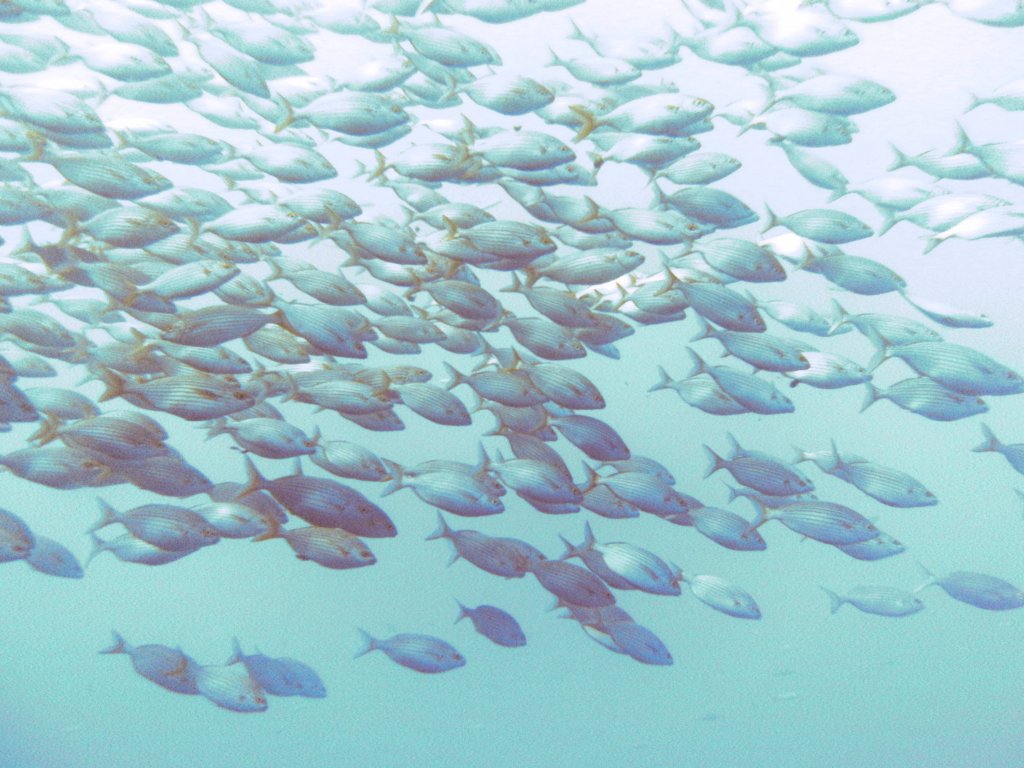
I think these are Cow Bream
Fortunately, though I did get to see the Giant Grouper who was hiding under a rock outcrop. Usually you don’t really make any sound underwater because your teeth are firmly gripping your second stage, so I slightly surprised myself to hear a “WOW!” uttered by me when I saw it. It’s a mighty big fish!
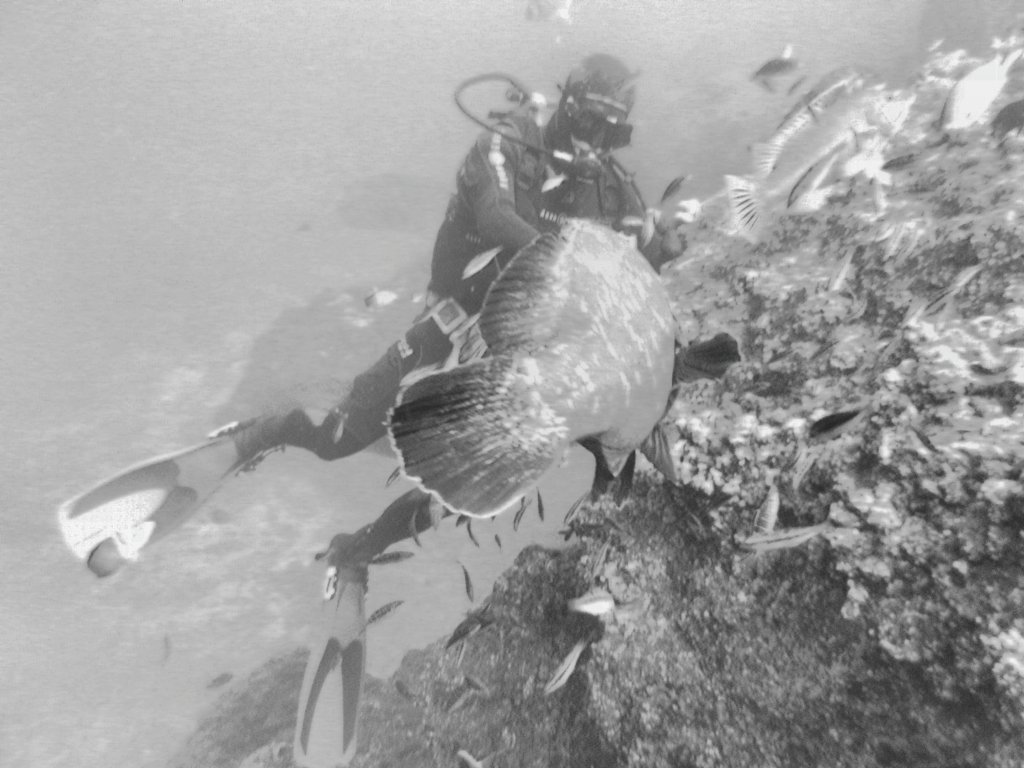
Paulo feeds Giant Grouper
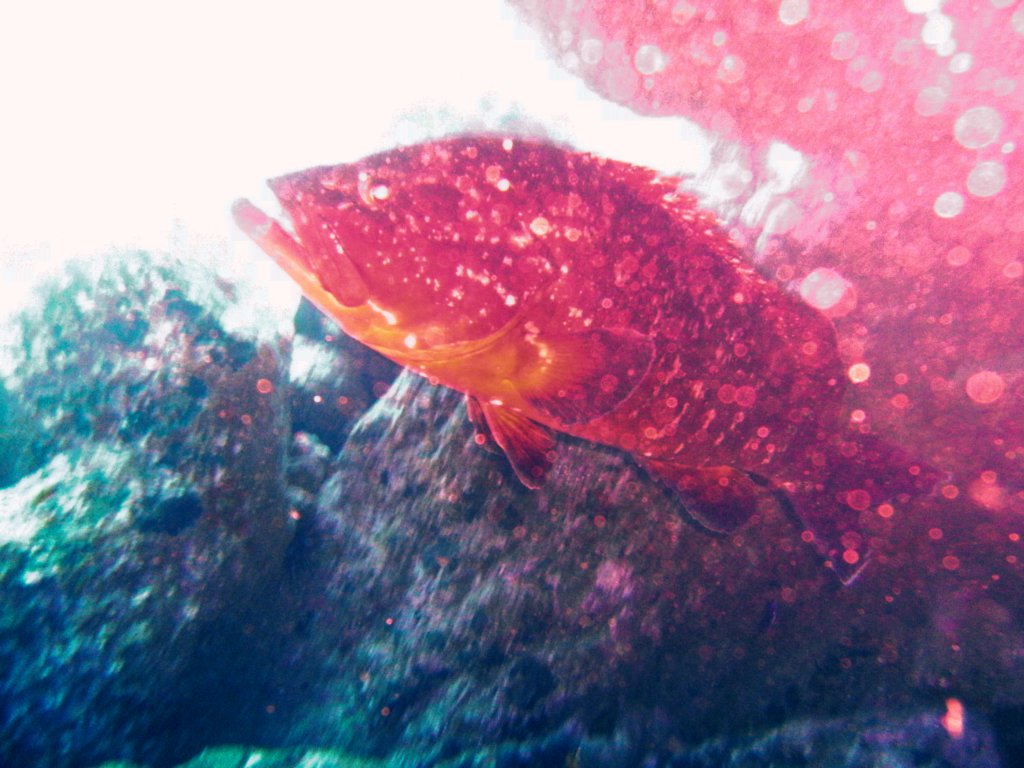
Famous Giant Grouper
So, that was it, my AOW dives completed, which along with the Knowledge Reviews from the PADI manual meant I was now a certified AOW diver.
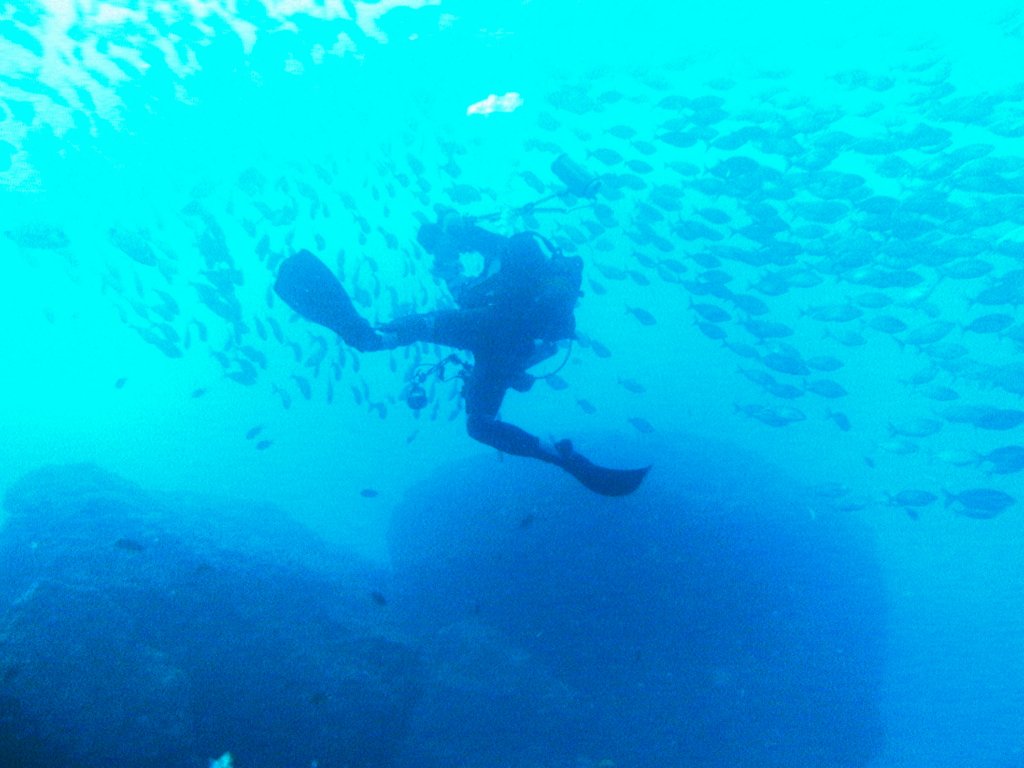
Photographer on a safety stop
Of course, the cards you get mean nothing in themselves, but I’d done 3 deep dives (I don’t imagine I’ll ever go deeper than 30M, 40’s the most you can do on a PADI certification anyway, I believe), experienced the effects of mild Narc-ing and worked on my buoyancy.
I was a bit frustrated by my high air consumption, but everyone tells me that will improve with experience and I’ve still yet to log 20 dives, so maybe it will.
My immediate plans are to do some more UK dives (maybe even try and get a sea dive or two in before it starts to get really cold), so maybe that will help me work on buoyancy and breathing and get the consumption down.
A big thanks to all at Madeira Divepoint, who I heartily recommend, especially Jennie for her time and patience and most importantly grabbing my fins when I lost my weight belt!
Read some more of my diving experiences, by clicking the icons below.


